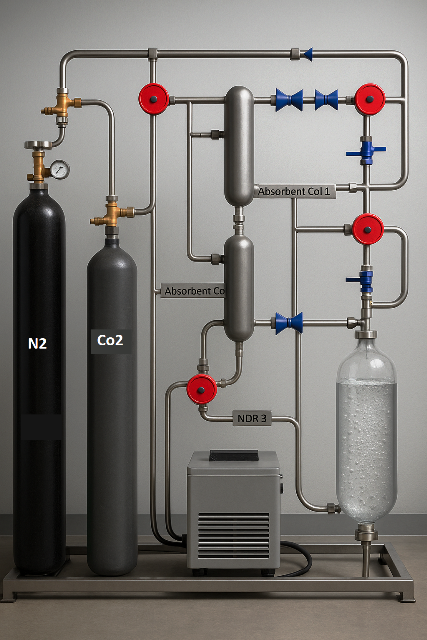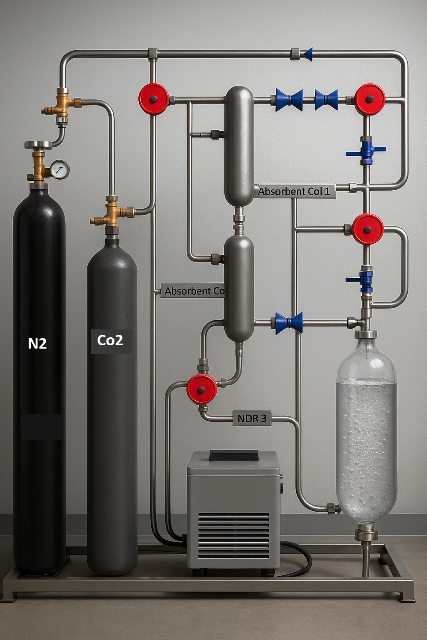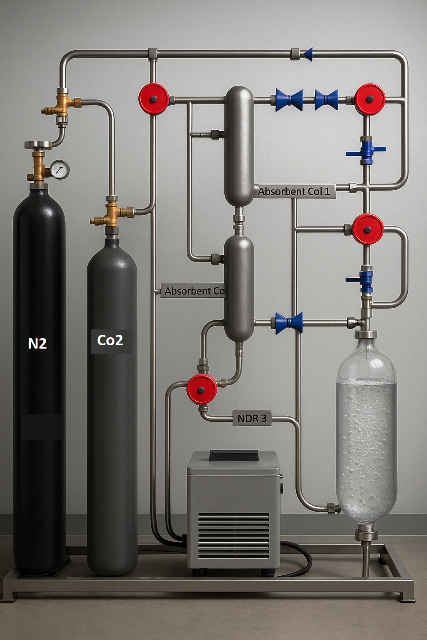Integrated Platform for Carbon Capture and Utilization
Integrated Platform for Carbon Capture and Utilization is a comprehensive, hands-on educational system designed to bring real-world Carbon Capture, Utilization, and Storage (CCUS) processes into the classroom and research environment. Tailored for engineering and science institutions, this lab-scale setup simulates the complete CCUS cycle—from carbon emission simulation and adsorption to desorption and final mineralization into stable compounds like CaCO₃. With integrated sensors, a PID-based control system, and an IoT-enabled data acquisition unit, this platform is suitable for both foundational learning and advanced experimentation.



